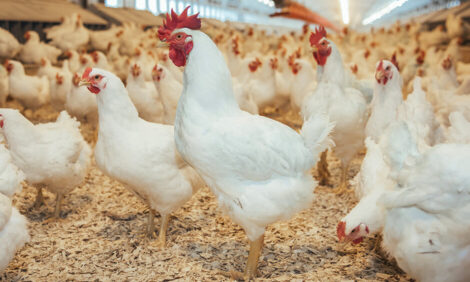



Alternatives to Soybean meal
By Nicholas M. Dale, Extension Poultry Scientist, University of Georgia, Athens, Georgia. Published by Poultry Science - Feed prices have been moving up steadily during the past several months. This is obvious to everyone who raises poultry either as a hobby or as a business.
The main reason for this has been a skyrocketing in the price of soybeans, brought on to a large extent by increased exports (which help offset the negative U.S. trade balance). Whatever the case, as most of the protein in poultry feeds comes from soybean meal, the impact of high soy prices is felt by everyone from major poultry-producing corporations to the owner of the backyard flock.
A number of small producers in the state of Georgia have contacted the Cooperative Extension Service asking about less expensive alternatives to soybean meal as a source of protein. If the following feed ingredients are available locally, they can be used to partially replace soybean meal in most poultry feeds.
Meat and Bone Meal
The typical meat and bone meal has about the same protein level as soybean meal. However, it has the advantage of also being high in calcium and phosphorus, 10% and 5%, respectively. The recent concern about mad cow disease should not discourage the use of this valuable feed ingredient here in the southeast. A 5% level of inclusion of meat and bone meal is popular.
Peanut Meal
This ingredient has become increasingly available during the past few years. Peanut meal has about the same protein as soybean meal (47-48%). However, this protein is not of the same quality as that in soy. Specifically, the critical amino acid lysine is very deficient in peanut meal. Thus, those who wish to use this ingredient should limit its incorporation to 3 or 4% of the diet. Higher levels of peanut meal will seriously reduce the amount of lysine and could increase the likelihood of aflatoxin contamination.
Cottonseed Meal
Cottonseed meal has somewhat less protein than soy (approximately 42%) and like peanut
meal, is not a good source of lysine. Unless synthetic lysine can be added to the diet, use of
cottonseed meal is usually limited to 4-5%. Gossypol is a compound found in cottonseed meal,
which at high levels can depress growth and discolor the yolk of eggs. However, for the backyard
flock, levels of inclusion of 5% should not cause noticeable problems.
Distiller’s Dried Gains with Solubles
This ingredient, commonly known as DDGS, is a by-product of fermentation. In past years,
most DDGS came from the beverage industry. More recently, tremendous amounts are becoming
available when corn is fermented to produce ethanol for motor fuels. DDGS has about 27% protein,
which is about half way between that of corn and soy. Research at the University of Georgia
indicates that DDGS can be used in all types of feeds, with maximum levels being between 10 and
15%.
All of the ingredients mentioned above are priced lower than soybean meal, and might be
considered when attempting to produce a lower cost feed. However, it is necessary to bear in mind
that all protein is not of the same quality. The amino acid composition of alternative protein sources
must be taken into account when preparing feeds for the backyard flock so that the birds are not
subjected to nutrient deficiencies.
The study is published in the University of Georgia's Poultry Science - Poultry Tips for the Year 2004
Source: University of Georgia - Poultry Science - May 2004









